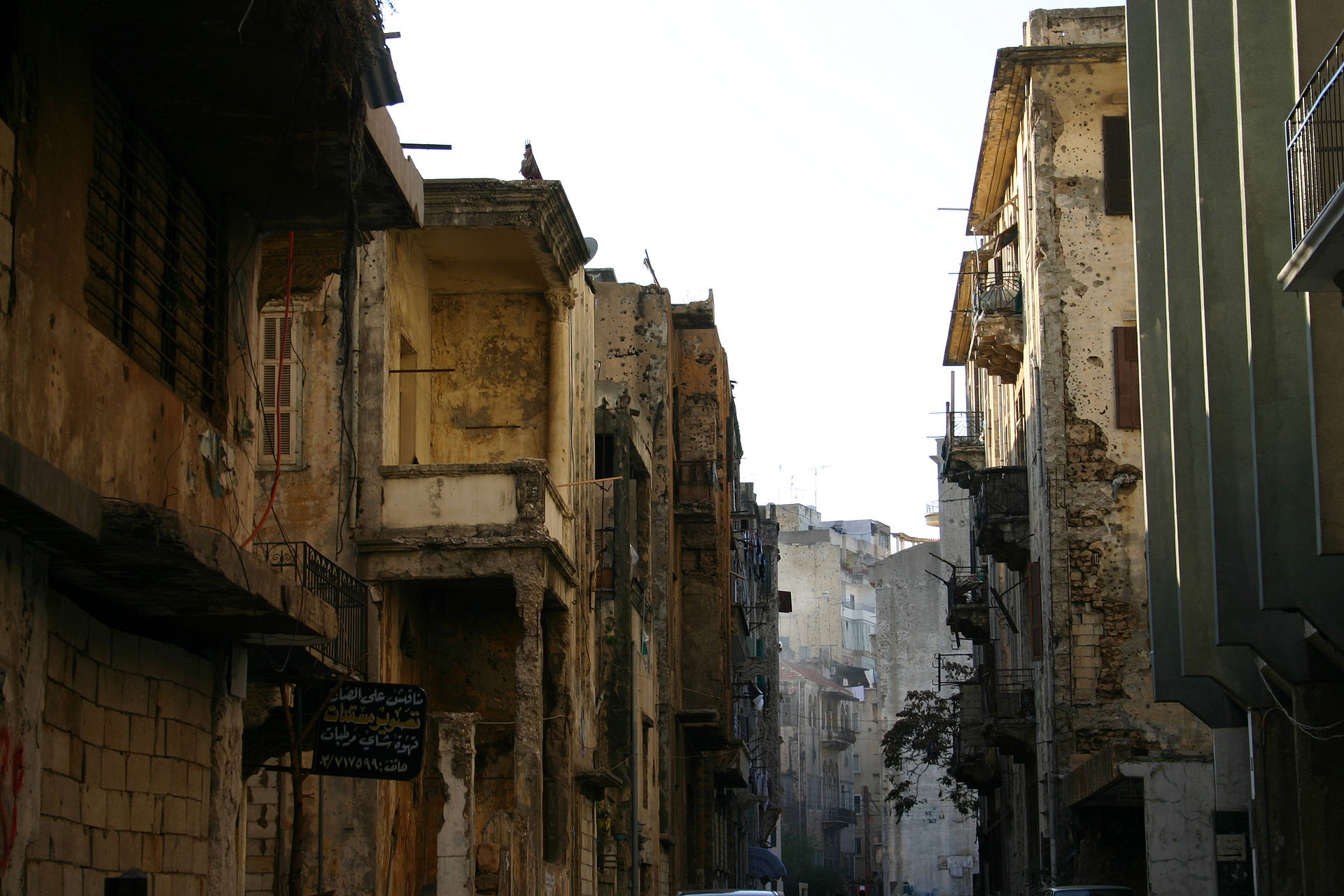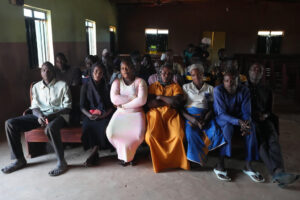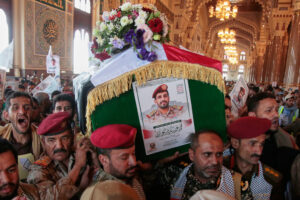Is Lebanon Headed to More Secular Politics?


Before the inception of the Lebanese republic, the Lebanese political system functioned as a multi-confessional system where power has been allocated to different religious communities. In 1920, French General Gouraud announced the formation of the state of Greater Lebanon, expanding the previously Ottoman autonomous governorate of Mount Lebanon. Under the French mandate, Maronite Christian community gained a monumental amount of power. Post-independence, Lebanon inherited this system. The unwritten National Pact of 1943 assigned each “ta’ifah”, a religious community/sect/confession, to a number of parliamentarians. Furthermore, a Christian Maronite assumed the Presidency of the Republic, the Prime Minister wasa Sunni Muslim, and the Parliament Speaker was a member of the Shia Muslim community. As modern-day protests continue in Lebanon, it’s important to explore the history of deep-rooted sectarianism, and assess the potential for Lebanon to move beyond the latter towards a more secular system.
Designed by Robert De Caix, this multi-confessional system gave privileges to the Maronite community due to their ‘special relationship’ with the West—mainly founded on their shared Christianity—and based on the assumption that they would make more loyal colonial subjects than the Muslim majority. Consequently, the Maronite community was overrepresented in politics at the expense of the Muslim communities: Christian communities (Maronite, Greek Orthodox, and Greek Catholic) held 58 percent of seats in the Chamber of Deputies when they only made up 50 percent of the population, according to a 1932 census. The composition of Chamber seats was later changed to give Christian and Muslim communities 50 percent of seats each.
Alongside inequalities in political power and representation, regional and sectarian socioeconomic disparities mark Lebanese society. The majority of national wealth was long concentrated in the hands of Lebanese elites in Beirut, whereas the remaining cities and rural areas were socioeconomically disenfranchised and neglected by the Lebanese government. South Lebanon, where the majority are Shi’a Muslims, is a notorious example as it gave birth to political movements during the 1970-80’s that challenged these regional and sectarian disparities, such as Harakat al-Mahroumin (Movement of the Dispossessed), led by prominent Shi’a cleric Imam Musa al-Sader. Musa al-Sader sought to increase political representation of his community and emancipate them from socioeconomic disenfranchisement. This example demonstrates how the political system in Lebanon is so deeply sectarian, that even regional disparities are entrenched along sectarian lines, and emancipatory movements usually mobilize within confessional boundaries.
Inequalities and subsequent tensions, interlinked with political divisions stemming from competing national identity visions (pro-West right-wing parties whose envisioned Lebanese identity is distant from an Arab identity versus Arab nationalist, anti-Zionist, left-leaning parties whose envisioned Lebanese identity is close to an Arab identity), and the presence of Palestinian guerrilla factions all culminated into a bloody civil war that devastated the country from 1975 until 1990. Syria intervened in 1976 under the umbrella of an Arab Army, and its presence in Lebanon would last until 2005.
The Ta’if Agreement, which put an end to the civil war and consolidated Syrian power in Lebanon, further solidified the sectarian power balance. At the end of the war and as a result of this agreement, all the “zua’ama”, the Arabic term for local or tribal leaders, who had been warlords, assumed positions of power. In 1991, the Lebanese government enacted an amnesty law pardoning political crimes committed during the war, giving these former warlords the ability to work in public service with impunity. The Ta’if agreement was instrumental in the establishment of a political elite characterized by both nepotism and clientelism, and in the consolidation of the Syrian military and intelligence services’ control of not only Lebanon’s security apparatus but also of Lebanese politicians through the Brotherhood Agreement. Whilst Syria played an important role in ending the war and stabilizing Lebanon for 15 years, its presence was problematic for the reasons aforementioned, and it would face contention.
The question of support for Syrian presence in Lebanon, like most political issues, divided the country further. In fact, it gave birth to the two main blocs that currently dominate the political arena: March 14 and March 8. The former is composed of Hariri’s Future Bloc (the leading political party of the Sunni Muslim comunity), the Lebanese Forces, the Kataeb Party (two smaller but still significant Christian parties), and the Independence Movement. These parties unified around their anti-Syrian stance in 2005, after the Future Bloc’s Rafic Hariri was assassinated in Beirut, and many speculated that Syria was responsible. March 14 supporters engaged in mass protests in 2005 calling for the withdrawal of Syrian troops.
As for March 8, it is made up of President Aoun’s Free Patriotic Movement (a leading political party for the Maronite community), Parliament Speaker Berri’s Amal Movement, Hezbollah (the leading parties for the Shi’a Muslim constituency) and other smaller parties. United by their pro-Syria stance, March 8 and its supporters mobilized to thank Syria for the role it played in ending the Civil War and supporting Lebanese resistance to Israeli military occupation. Paradoxically, whilst Syria helped put an end to the war, the Ta’if agreement and Syrian presence further entrenched sectarian and political divisions that caused the war in the first place.
Consolidating a secular Lebanese national identity is a lengthy process, especially considering that Lebanon is a very young ‘nation’ born out of colonialism, but these unifying demonstrations are a crucial first step.
Post the Syrian withdrawal in 2005, March 14 and March 8 continue to dominate Lebanese politics, as the political elite that ascended thanks to the Ta’if agreement remains in power. Prime Minister Hariri is in power thanks to nepotism, House Speaker Berri has remained in power for 27 years, and the overwhelming majority of members of parliament belong to either bloc. The blocs are embroiled in a regional power game between Saudi Arabia and Iran respectively, and thus, regional developments generally divide Lebanese politics. For example, March 14 and its supporters were, much like Saudi Arabia, vocal about their anti-Assad stance starting in 2011, whereas March 8 was against the ousting of Assad and Hezbollah specifically took on a direct approach by militarily supporting the Syrian Arab Army since 2012.
Now, since the confessional system of Lebanon was historically constructed and solidified, why are we discussing secularism? Secular movements also have a long history in Lebanon. Even though the system is dominated by the “zua’ama”, leftist movements have played an important role as the hub of secular politics. They have not entered mainstream politics in any significant way, but secularism may have a chance in Lebanon: national consciousness is on the rise due to disillusionment with the current sectarian system, plunging economic conditions have rallied Lebanese citizens of all sects, and the Lebanese Constitution actually calls for non-sectarian electoral law.
Over the years, many Lebanese people have become disillusioned with Lebanese politicians, the government and public institutions due to the high levels of corruption, politicians offshoring taxpayer money, unsustainable public debt, increasing privatization, stagnation of wages, high inflation, and high unemployment. This year, the Lebanese Parliament voted for a highly scrutinized budget plan for 2020, which included a series of austerity measures. Furthermore, the Minister of Telecommunications announced a proposed Whatsapp tax that would add 20 percent extra cost on the first WhatsApp call users made every day, which was the last straw for many Lebanese people. This led to a series of ongoing protests across the whole country: the streets of Beirut, Tyr, Sidon, Tripoli and Byblos were filled with thousands upon thousands of citizens. It’s estimated that, at the movement’s peak, over 1.5 million people participated—which is roughly 38 percent of the Lebanese population. Though dissent around the Whatsapp tax sparked the demonstrations, Lebanese citizens quickly moved on to greater demands. Demonstrators have called for many things, including the resignation of the government, bringing back stolen taxpayer money, increasing government transparency, lifting financial institutions’ secrecy and promoting transparency, taxing financial institutions and upper-income households, lifting immunity for corrupt politicians, reforming the constitution, abolishing sectarianism, electing a government in six months, and promoting technocracy in state institutions.
The peculiarity of these protests is that not a single flag related to any of the elite political parties was raised; the only flag seen is that of the Lebanese republic. Such mass mobilization across all religious communities is unprecedented. Protesters were chanting “Kellon ya’ane kellon” (“All of them means all of them”), referring to the entirety of the Lebanese government, all parties included. Lebanese citizens of all religious backgrounds, ages, and classes mobilized heavily yet effortlessly; women and youth were at the forefront of the protests, and they remained unified under the Lebanese flag.
With these developments in mind, I wonder whether Lebanon is headed to a post-confessional era. Whilst unity around socioeconomic interests and anti-corruption help erode some of the sectarian lines of Lebanese society, it doesn’t mean that historically and politically deep-rooted sectarianism will just disappear. Consolidating a secular Lebanese national identity is a lengthy process, especially considering that Lebanon is a very young ‘nation’ born out of colonialism, but these unifying demonstrations are a crucial first step. Though deeply rooted sectarianism will not immediately disappear, the Lebanese Constitution is a good place to start the process of eradicating it. Article 24 of the Constitution posits that confessionalism is an interim measure until non-confessional electoral laws are enacted. Is it time to enact them?
Is it time to abandon the multi-confessional system? As a Lebanese citizen, I believe if the confessional system as we know it was designed and installed by colonial patrons, wouldn’t abolishing it and replacing it with a secular political system be an act of decolonization? Isn’t it time for us to free ourselves of our self-identification as sects? Isn’t it time for us to build our own collective identity, free of colonial presumptions about ourselves? The current political systems across the Middle East are largely the legacy of European colonialism, therefore they are not the result of our own imagination. Isn’t it time for us to put our political imagination to use? Let’s not forget that, as Benedict Anderson put it, nations are “imagined political communities.” Therefore, when we discuss redesigning the Lebanese sectarian political system into a secular one, we cannot omit the importance of redesigning our national identity in a way that would suit secularism and move Lebanon beyond its sectarian history. This process is not an easy one, but it all starts with our imagination.
So what can Lebanese citizens imagine? What would a post-confessional Lebanese nation look like? What would a national Lebanese identity mean? The answers are unclear, and most Lebanese citizens would face difficulty in attempting to answer these questions, but the important thing is that we grapple with them.
The protests have entered their sixth week, demonstrating Lebanese people’s resilience, their ability to unite beyond their “ta’ifah”, their optimistic spirit, even in such poor socioeconomic conditions, and their innovative and inventive nature which can be seen in their unique protesting methods. From dancing the “dabkeh” to cleaning up landfill during the protests, from chanting funny and provocative statements to using a national landmark—the Egg—as a symbol of the protests, from distributing basic necessities to forming a human chain that spread from the South to the North, the Lebanese seem to never run out of ideas. Hopefully this creativity will be used in rebuilding our identity as a people. Moving forward, I’m excited to see women and young people engaging in secular politics, in national dialogue and in our identity-building. Like mass contentious movements in Sudan, Iraq, Chile and Haiti, leaderless movements with women and young people at their forefront are the new wave, and we should embrace them.
Zeinab Fayad is a graduate student at New York University’s Graduate School of Arts and Sciences, working towards a master’s degree in International Relations with a concentration in Middle Eastern and Levantine Studies. In 2018, she graduated from Paris-Dauphine University with a bachelor’s degree in International Economics and Development.





Very informative, well written and inspiring article! Thank you.